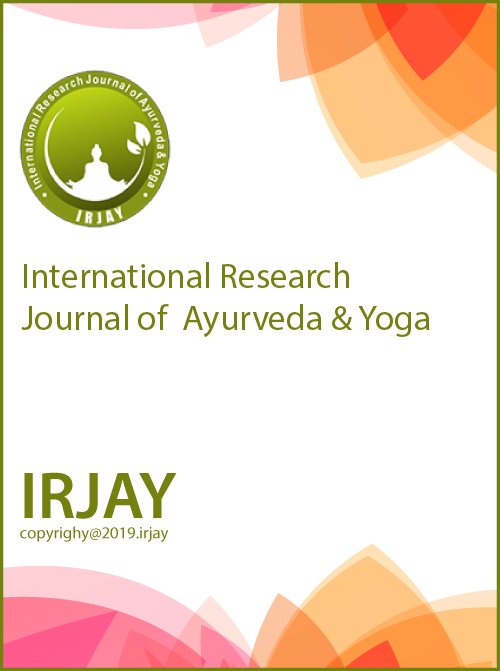Depression Levels in Yoga Practice: A Comparative Study of two Experiencing Practicing Yoga Groups During the Covid-19 Pandemic in Bali
DOI:
https://doi.org/10.48165/Keywords:
covid-19, depression, pandemic, yogaAbstract
Introduction: Depression is a serious problem that emerged during the Covid-19 pandemic. Many people experience depression, especially those who test positive for Covid-19. The purpose of this study was to determine the difference in the level of depression in yoga practitioners with experience different durations of practicing yoga in SegerOger yoga practitioners during the Covid-19 outbreak. Methods: This research is an observational study with a cross-sectional study design. Seventy-eight respondents aged between 30 and 72 years were divided into two, namely yoga practice experience of fewer than two years and more than 2 years. Depression scores were assessed using the DASS 21. Data were analyzed using the Mann-Whitney test. Result: The results of the research on the influence of the duration of yoga practice on depression showed that the average ranking data for the group of practitioners less than 2 years was 42.32 and for the group of practitioners more than 2 years, namely 36.95. Based on the results of the statistical test, it was found that the Asymp. The Sig. (2-tailed) value of 0.164 was greater than the probability value of 0.05. Therefore, according to the decision-making basis for the Mann-Whitney U test, it can be concluded that there is no significant difference in the level of depression in yoga practitioners less than 2 years compared to more than 2 years. Conclusion: Based on the results of the study it was concluded that the duration of yoga experience does not affect the level of depression in Seger Oger Yoga practitioners.
Downloads
References
Al Dhaheri, 2021, Impact of COVID-19 on mental health and quality of life: Is there any effect? A cross-sectional study of the MENA region. PLoS ONE 16(3): e0249107. https://doi.org/10.1371/journal.pone.0249107
Salari, N, Prevalence of stress, anxiety, depression among the general population during the COVID-19 pandemic: a systematic review and meta-analysis. Global Health 16, 57. https://doi.org/10.1186/s12992-020-00589-w
Xiang, YT, Timely mental health care for the 2019 novel coronavirus outbreak is urgently needed. The Lancet Psychiatry, 7(3), 228–229. https://doi.org/10.1016/S2215- 0366(20)30046-8.
Jiang, N, Depression, Anxiety, and Stress During the COVID-19 Pandemic: Comparison Among Higher Education Students in Four Countries in the Asia-Pacific Region. Journal of Population and Social Studies (JPSS). 29 : 370-383. http://doi.org/10.25133/JPSSv292021.023
Pal GK, Yoga to Combat and Prevent COVID-19. International Journal of Clinical and Experimental Physiology, 7(2), 46–47. https://doi.org/10.5530/ijcep.2020.7.2.12.
Pachegaonkar, U Early Recovery from Anosmia and Ageusia of COVID-19 by Practice of Slow Breathing of Pal’s Pranayama Schedule: A Brief Communication. International Journal of Clinical and Experimental Physiology, 7(3), 119–121. https://doi.org/10.5530/ijcep.2020.7.3.28.
Nagendra, HR 2020, Yoga for COVID-19. 3–5. https://doi.org/10.4103/ijoy.IJOY
Venkatesh, H, Molecular signature of the immune response to yoga therapy in stress-related chronic disease conditions: An insight. International Journal of Yoga, 13(1), 9. https://doi.org/10.4103/ijoy.ijoy_82_18
Balaji, PA, Physiological effects of yogic practices and transcendental meditation in health and disease. North American Journal of Medical Sciences, 2010 4(10), 442– 448. https://doi.org/10.4103/1947-2714.101980
Sharma, N 2021, peace of mind (the inner peace) and mental health: a comparative study of two age groups during the Covid19 pandemic", International Journal of Emerging Technologies and Innovative Research (www.jetir.org),8(9):b817-b822, DOI: 10.6084/m9.jetir.JETIR2109200
Alnazly E, Anxiety, depression, stress, fear and social support during COVID-19 pandemic among Jordanian healthcare workers. PLoS ONE 16(3): e0247679. https://doi.org/10.1371/journal. pone.0247679.
Izzatika, Indonesia's mental health status during the Covid 19 pandemic. Indigenous: Jurnal Ilmiah Psikologi, 2021 6(2). 78-92. doi: http://dx.doi.org/10.23917/indigenous.v6i2.11945
Bridges L, and Sharma M. 2017. The Efficacy of Yoga as a Form of Treatment for Depression. Journal of Evidence Based Complementary & Alternative Medicine 2017, Vol. 22(4) 1017-1028.
Javnbakht, M., 2009. Effects of yoga on depression and anxiety of women. Complementary Therapies in Clinical Practice 15: 102-104.
Saeed SA, Depression and Anxiety Disorders: Benefits of Exercise, Yoga, and Meditation. American Family Physician.99 (10): 620-627.
Sahni PS, Yoga an effective strategy for self management of stress-related problems and wellbeing during COVID 19 lockdown: A crosssectional study. PLoS ONE 16(2): e0245214. https://doi.org/10.1371/journal.pone.0245214
Kim, O.; Heo, N. Self-Management Support with Yoga on Psychological Health and Quality of Life for Breast Cancer Survivors. Int. J. Environ. Res. Public Health 2022, 19, 4183. https://doi.org/10.3390/ ijerph19074183
Shashidhara, 2020. Basic Concept of Yoga. International Journal of Creative Research Thoughts, 8 (5): 4125-4130

